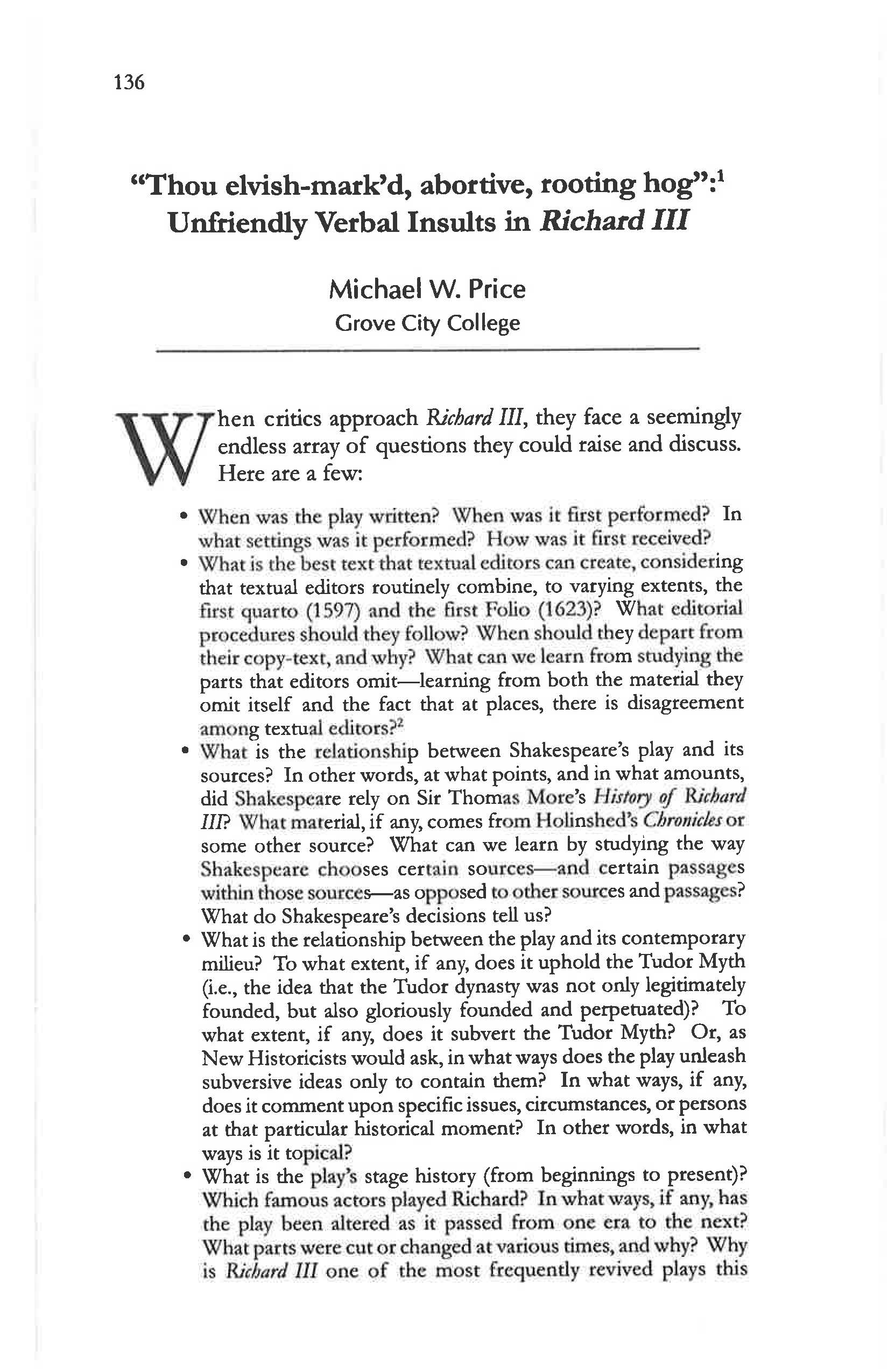"Thou elvish-mark'd, abortive, rooting hog'':1 Unfriendly Verbal Insults in Richard III
Main Article Content
Abstract
When critics approach Richard III, they face a seemingly endless array of questions they could raise and discuss. Here are a few:
When was the play written? When was it first performed? In what settings was in performed? How was it first received?
What is the best text that textual editors can create, considering that textual editors routinely combine, to varying extents, the first quarto (1597) and the first Folio (1623)? What editorial procedures should they follow? When should they depart from their copy-text, and why? What can we learn from studying the parts that editors omit—learning from both the material they omit itself and the fact that at places, there is a disagreement among textual editors?2
What is the relationship between Shakespeare’s play and its sources? In other words, at what points, and in what amounts, did Shakespeare rely on Sir Thomas More’s History of Richard III? What material, if any, comes from Holinshed’s Chronicles or some other source? What can we learn by studying the way Shakespeare chooses certain sources—and certain passages within those sources—as opposed to other sources and passages? What do Shakespeare’s decisions tell us?
